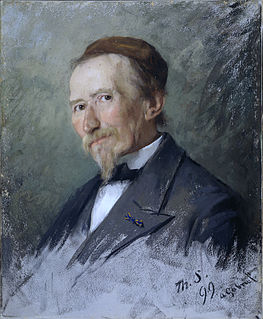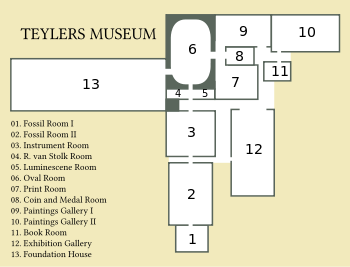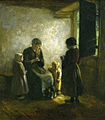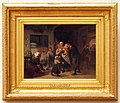
The Hague School is a group of artists who lived and worked in The Hague between 1860 and 1890. Their work was heavily influenced by the realist painters of the French Barbizon school. The painters of the Hague school generally made use of relatively somber colors, which is why the Hague School is sometimes called the Gray School.

Amsterdam Impressionism was an art movement in late 19th-century Holland. It is associated especially with George Hendrik Breitner and is also known as the School of Allebé.

Jan Hendrik Weissenbruch, also known as Hendrik Johannes Weissenbruch was a Dutch painter of the Hague School. He is noted especially for his watercolours.

Pulchri Studio is a Dutch art society, art institution and art studio based in The Hague ('s-Gravenhage), Netherlands.

Wybrand Hendriks, was a Dutch painter and the concierge of the Teylers Museum. He is primarily known because of his portraits.

Paul Joseph Constantin Gabriël or Paul Gabriël was a painter, draftsman, watercolorist, and etcher who belonged to the Hague School.

Hendrik Jacobus Scholten, was a 19th-century painter from the Netherlands.

The Teylers astronomical observatory is an astronomical observatory built in 1784 on the roof of the Oval Room of the Teylers Museum in Haarlem.

Cornelis van Noorde, was an 18th-century landscape painter and draughtsman from the Northern Netherlands.

Kunst zij ons doel, or KZOD, is the name of an artists club in the Waag, Haarlem.

August Allebé (1838–1927) was a 19th-century artist and teacher from the Northern Netherlands. His early paintings were in a romantic style, but in his later work he was an exponent of realism and impressionism. He was a major initiator and promoter of Amsterdam Impressionism, the artist's association St. Lucas, and the movement of the Amsterdamse Joffers. Amsterdam Impressionism – sometimes referred to by art historians as the School of Allebé – was the counterflow to the very strong Hague School in the movement of Dutch Impressionism. As a professor at the Royal Academy of Amsterdam he fostered a cosmopolitan attitude toward art and the promotion and motivation of his students, and provided a significant stimulus to developments in modern art.

John Rädecker was a painter and sculptor from the northern Netherlands, best known for his Monument on the Dam.

Bart van Hove was a 19th-century Dutch sculptor.

Jan Weissenbruch was a 19th-century Dutch painter.

The Eerste Schilderijenzaal, or Painting Gallery I, is one of two art gallery rooms in Teylers Museum and is the oldest art gallery for contemporary Dutch art in the Netherlands. It was built onto the back of Teylers Oval Room in 1838. It was the young museum's first exhibition space for paintings and could be entered through the Oval Room, which was itself located behind the Fundatiehuis, the former home of Pieter Teyler van der Hulst.

The Fossil room II is one of two paleontological display rooms in Teylers Museum. The Fossil room II was built in 1885 as an extension of the first Fossil room I, under the direction of the architect Ad van der Steur Jr..

The Teylers Coin and Medal Room, or Numismatisch Kabinet, is a small display room in Teylers Museum that was designed in 1888 and furnished with special display cabinets in 1889.
























































